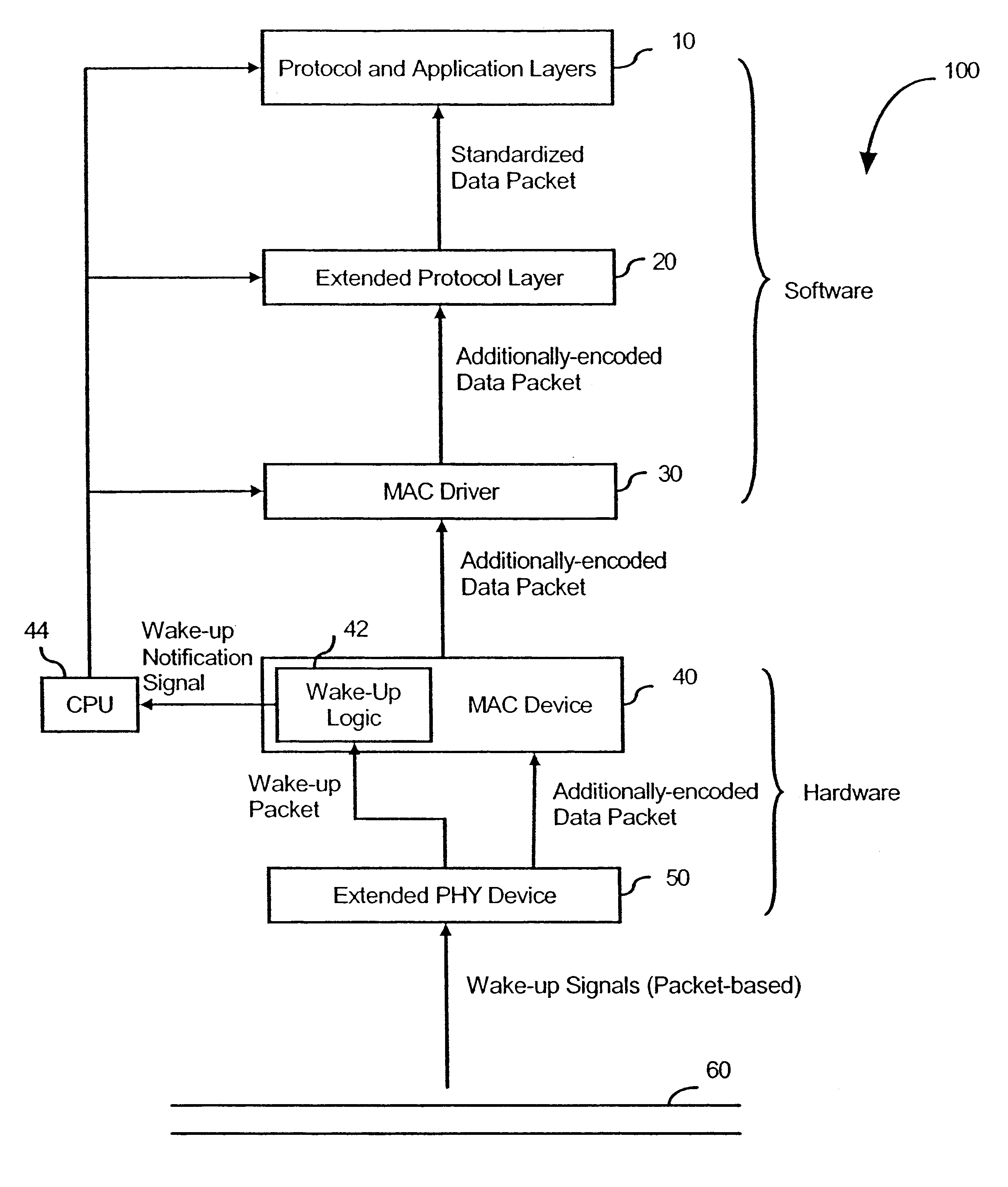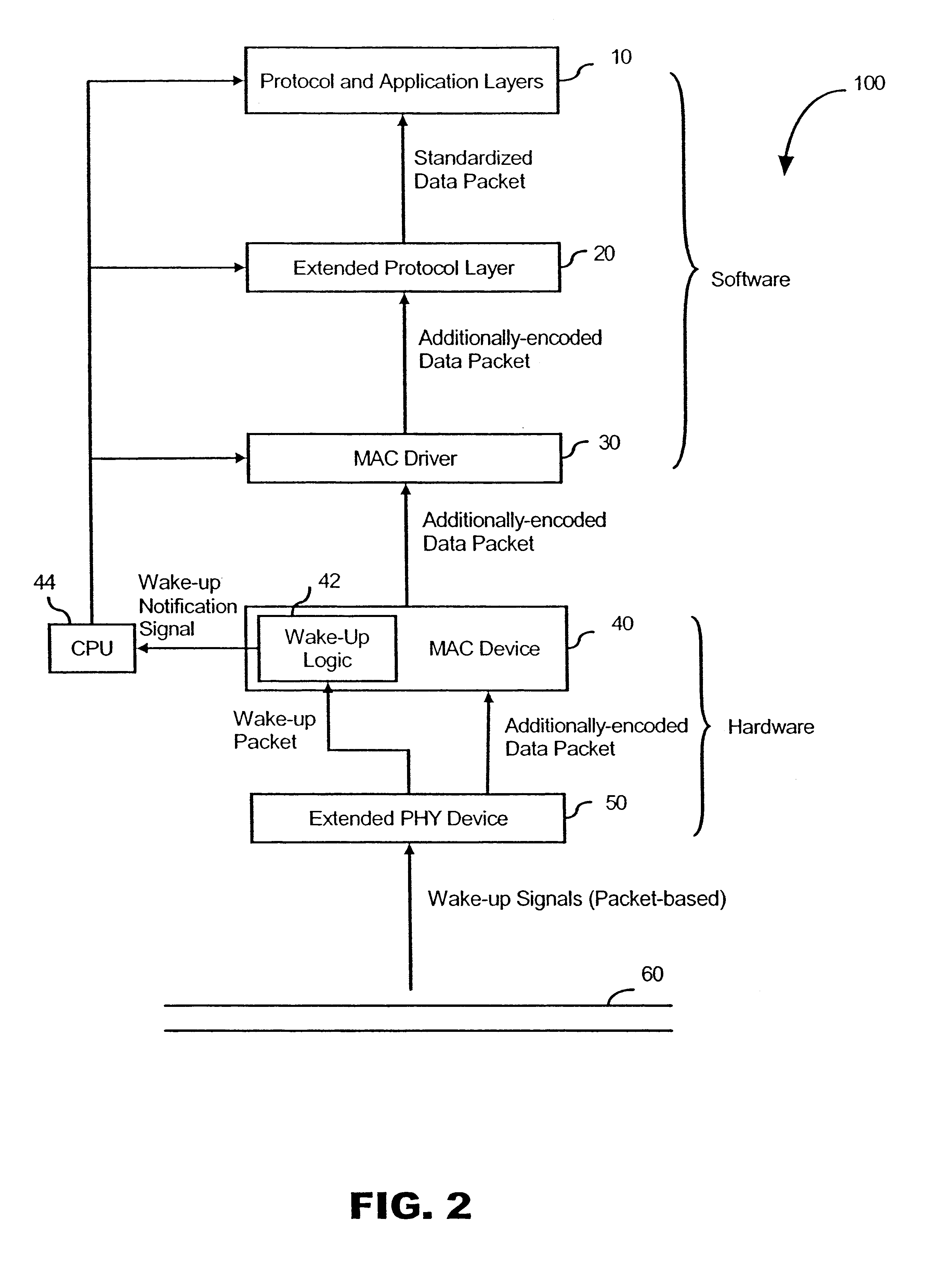System and method for processing wake-up signals in a network
a technology of network wake-up and wake-up signal, applied in high-level techniques, instruments, data switching details, etc., can solve the problems of limited matching capability, system failure, and inability to locate wake-up, and achieve the effect of less complicated and less costly to modify
- Summary
- Abstract
- Description
- Claims
- Application Information
AI Technical Summary
Benefits of technology
Problems solved by technology
Method used
Image
Examples
first embodiment
FIG. 2 is a block diagram of a system 100 for processing wake-up signals during a sleep mode of a computer in a communications network according to the present invention. The system 100 is implemented in a computer of a packet-based network system such as the Ethernet where data is communicated in packets and where wake-up signals carry wake-up data as well as additional encoding data that is variable in length. As shown in FIG. 2, the system 100 includes protocol and application layers 10, an extended protocol layer 20, a MAC driver 30, a MAC device 40 including wake-up logic 42, an extended PHY device 50, and a network medium 60, all operatively coupled. All of the components (10, 20, 30, 40 and 60) are conventional components that operate in the manner well known in the network art, except for the extended PHY device 50.
The extended PHY device 50 is a modified version of a conventional PHY device and is capable of generating a standardized “wake-up” packet based on an additionall...
second embodiment
FIG. 4 is a block diagram of a system 200 for processing wake-up signals during a sleep mode of a computer in a communications network according to the present invention. In this embodiment, the system 200 is capable of processing a wake-up signal that is not packet-based, e.g., a wake-up signal can be a tone signal, a level signal (e.g., 5 volts), a pulse signal, an optical signal, etc. For example, the system 200 is able to process a wake-up signal representing a particular tone. This embodiment allows any system to wake up the sleeping components in response to a simple non-packet based wake-up signal. Once the system 200 is awake, however, it can process data packets according to known techniques.
As shown in FIG. 4, the system 200 includes protocol and application layers 10, a MAC driver 30, a MAC device 40 including wake-up logic 42, an extended PHY device 52, and a network medium 60, all operatively coupled. The components 10, 30, 40 and 60 are the same elements as the compone...
PUM
 Login to View More
Login to View More Abstract
Description
Claims
Application Information
 Login to View More
Login to View More - R&D
- Intellectual Property
- Life Sciences
- Materials
- Tech Scout
- Unparalleled Data Quality
- Higher Quality Content
- 60% Fewer Hallucinations
Browse by: Latest US Patents, China's latest patents, Technical Efficacy Thesaurus, Application Domain, Technology Topic, Popular Technical Reports.
© 2025 PatSnap. All rights reserved.Legal|Privacy policy|Modern Slavery Act Transparency Statement|Sitemap|About US| Contact US: help@patsnap.com



